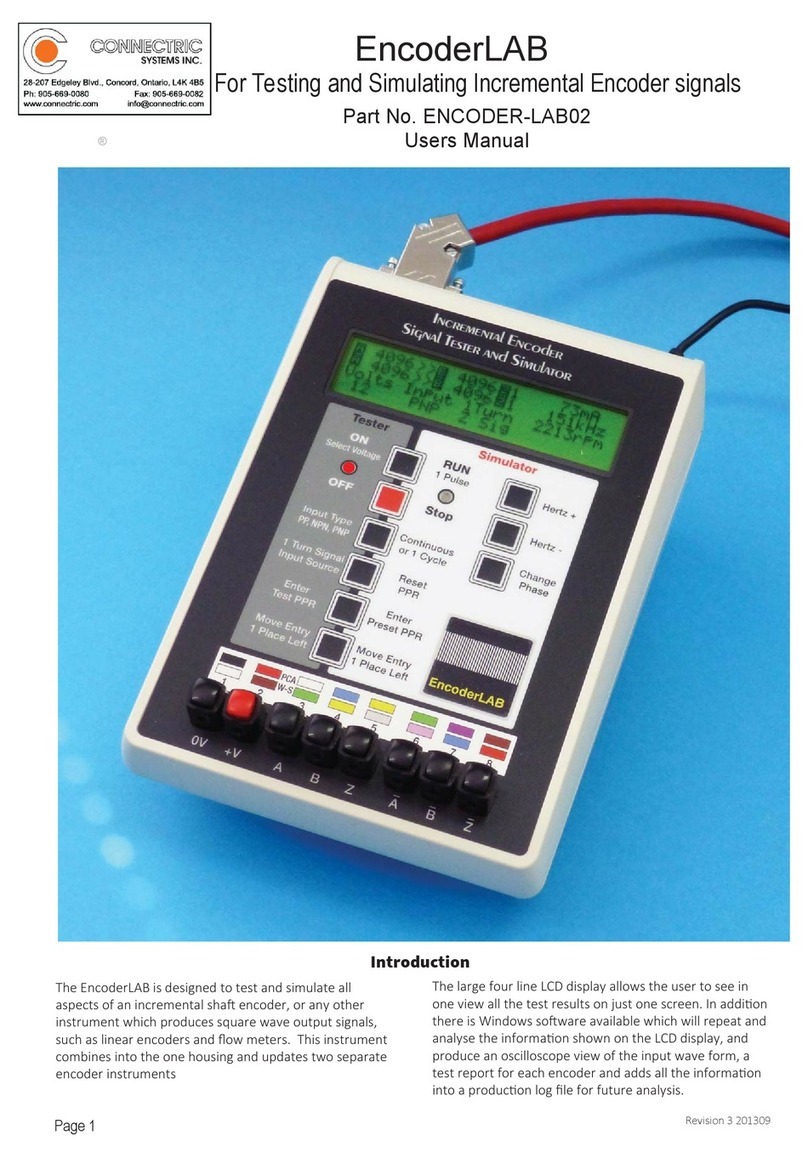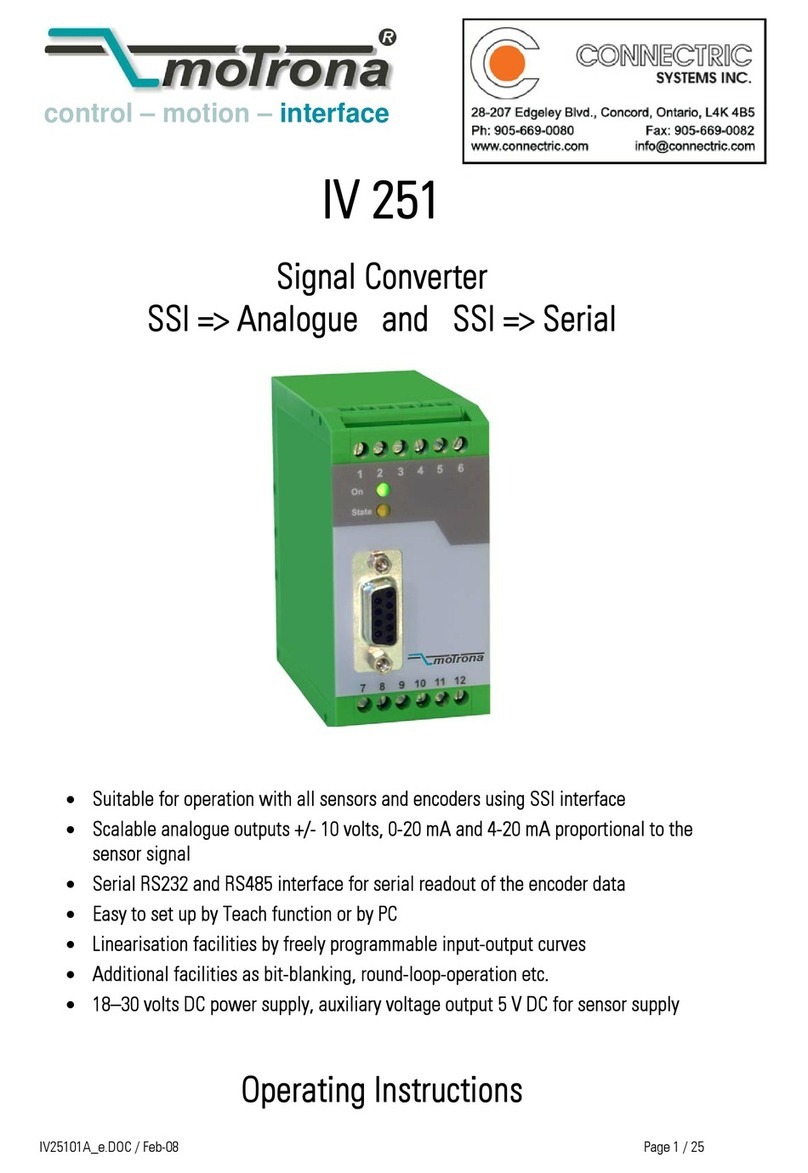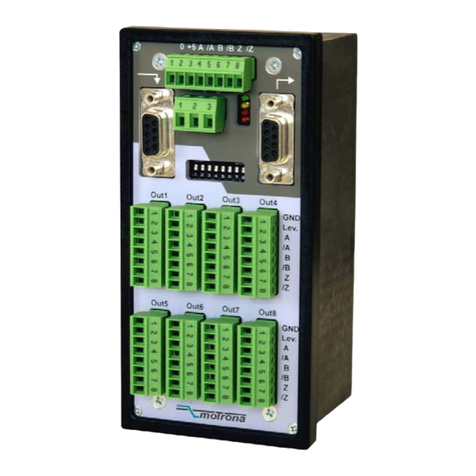
FU25202b_e.doc / Dez-08 Page 3 / 34
Table of Contents
1. Compatibility Hint ..........................................................................................4
2. Introduction....................................................................................................5
2.1. Impulse input formats and input levels....................................................................5
2.2. Operating range........................................................................................................6
2.3. Suitable encoders and sensors ................................................................................6
3. Terminal Assignments and Connections........................................................7
3.1. Example for use of TTL encoders .............................................................................7
3.2. Example for use of HTL encoders.............................................................................8
3.3. Proximity switches, photocells etc...........................................................................8
3.4. Analogue outputs .....................................................................................................8
3.5. Serial interface.........................................................................................................9
4. DIL Switch Settings......................................................................................10
4.1. Basic mode of operation ........................................................................................10
4.2. Impulse levels and symmetric / asymmetric input formats...................................11
4.3. Analogue output format .........................................................................................12
4.4. Selecting the RS232 or the RS485 serial interface ...............................................13
4.5. Teach function, Test function, loading of default settings....................................13
5. Commissioning.............................................................................................14
5.1. Conversion of one only frequency (single channel or dual channel with direction
signal).....................................................................................................................15
5.2. Conversion and combination of two independent frequencies (A + B, A - B, A x
B, A : B)..................................................................................................................15
6. PC Setup with Use of the Operator Software OS3.x................................... 16
7. Parameter Description .................................................................................18
8. Free Programmable Linearization.................................................................25
9. Monitor Functions........................................................................................ 27
10. Data Readout via Serial Interface................................................................29
11. Dimensions .................................................................................................. 30
12. Specifications ..............................................................................................31
13. Internal Registers and Serial Codes.............................................................32
14. Commissioning Form....................................................................................34






























